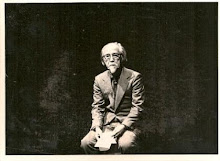 As technology makes the gulf between cultures even narrower, a very noticeable homogeneity has begun to creep in. With English taking hold as the lingua franca of business, politics, and education, the variety of languages that currently exist around the globe will shrink in number in the coming decades. Though this "one world, one language" mentality might narrow the cultural gap that people must make to understand one another, we may also be made poorer as more and more voices and modes of expression are silenced in the name of progress.
As technology makes the gulf between cultures even narrower, a very noticeable homogeneity has begun to creep in. With English taking hold as the lingua franca of business, politics, and education, the variety of languages that currently exist around the globe will shrink in number in the coming decades. Though this "one world, one language" mentality might narrow the cultural gap that people must make to understand one another, we may also be made poorer as more and more voices and modes of expression are silenced in the name of progress.
For the Mongolian filmmaker Byambasuren Davaa, the three films she has directed have taken audiences to alien landscapes, i.e. the Gobi desert and the mountains and valleys of the Mongolian steppes, and explored the lives and rituals of isolated pastoral herders. Her films explore a way of life very few in the West are privy to and which also are becoming an obsolete as the demands of the modern world force history’s most famous nomads to give up their wandering ways.

Her sophomore feature The Cave of the Yellow Dog (2005) is ostensibly a children’s fable, though it is not just a kid’s movie. The film is more like a tone poem dedicated to the harsh and unforgiving Mongolian wilderness where Genghis Khan’s descendants once galloped on fierce warhorses. First time viewers will quickly realize the main theme in the picture is the spiritual concept of reincarnation. Davaa peppers the film with shots of characters praying to a Buddhist altar, enacting age old superstitious rituals, and retelling myths and legends about animals and men in a constant cycle of birth and rebirth.
Opening ominously on a mountainside right before dawn we catch sight of a man and a little girl, in silhouette, walking up the side of a mountain. It’s a mystery what they are doing, but soon we understand from their conversation that they have come there to bury a dog. We learn from the father that it is apparently a traditional custom to position a dog with its tail behind its head so that its spirit may have the chance to come back as a man and not another animal. Those with the impression that The Cave of the Yellow Dog is some sort of cutesy Disney-esque movie are sadly mistaken. From the first scene, Davaa doesn’t let up with the death imagery: sheep splayed on the grass and skinned for their fur, vultures circling around the family’s yurt, and storm clouds which appear out of nowhere and threaten danger abound in the movie and lend it a documentary feel.

Davaa doesn’t pander to her audience and shows the viewer the brutal and beautiful of nature. Many films that deal with the theme of man vs. nature usually establish early a delineation between civilization and the savage force of nature, but in The Cave of the Yellow Dog, there is nothing that separates the little girl Nansal and her family from that world. Though no great tragedies occur in The Cave of the Yellow Dog, even upon re-watching the movie, it is hard not to be a little worried at times as the threat of death looms heavy over the children in many scenes.
Having seen The Cave of the Yellow Dog countless times now, I am in awe at how simple this film is. Clocking in at roughly 90 minutes, the story goes by quickly and Davaa has such command that there isn’t a wasted shot or cut in the film. In an interview she gave for the Tartan DVD release, the director mentioned that, although she had written a treatment for the film, when it came time to finally shoot, all her ideas went out the door. And like the nomadic herders in her film she had to depend on whatever the kids and scenery were willing to give her on that particular day. This organic development of the story makes it more than just a heartwarming tale but also a historical document of an endangered way of life.
(Originally published on February 23, 2013 at VCinema Show Podcast and Blog.)





No comments:
Post a Comment